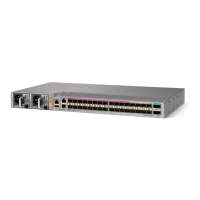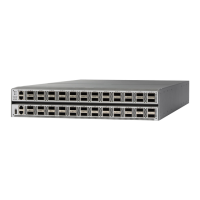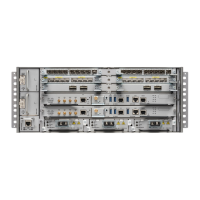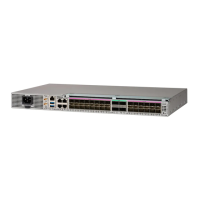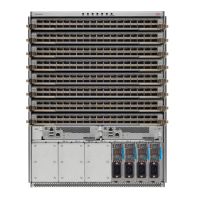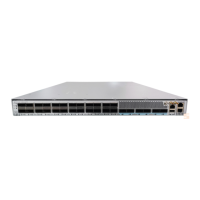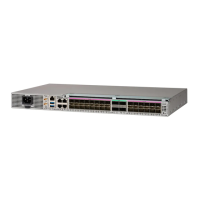• IP Cisco Express Forwarding (CEF)
You must enter the commands in the following task on every OSPF router in the traffic-engineered portion
of your network.
Note
SUMMARY STEPS
1. configure
2. router ospf process-name
3. router-id { router-id }
4. mpls traffic-eng router-id interface-type interface-instance
5. area area-id
6. mpls traffic-eng
7. interface type interface-path-id
8. commit
9. show ospf [ process-name ] [ area-id ] mpls traffic-eng { link | fragment }
DETAILED STEPS
PurposeCommand or Action
configure
Step 1
Enables OSPF routing for the specified routing process and
places the router in router configuration mode.
router ospf process-name
Example:
Step 2
The process-name argument is any
alphanumeric string no longer than 40 characters.
Note
RP/0/RP0/CPU0:router(config)# router ospf 1
Configures a router ID for the OSPF process.
router-id { router-id }
Step 3
Example:
We recommend using a stable IPv4 address as
the router ID.
Note
RP/0/RP0/CPU0:router(config-ospf)# router-id
192.168.4.3
(Optional) Specifies that the traffic engineering router
identifier for the node is the IP address associated with a
given interface.
mpls traffic-eng router-id interface-type
interface-instance
Example:
Step 4
• This IP address is flooded to all nodes in TE LSAs.
RP/0/RP0/CPU0:router(config-ospf)# mpls traffic-eng
router-id loopback 0
• For all traffic engineering tunnels originating at other
nodes and ending at this node, you must set the tunnel
destination to the traffic engineering router identifier
of the destination node because that is the address that
the traffic engineering topology database at the tunnel
head uses for its path calculation.
Routing Configuration Guide for Cisco NCS 6000 Series Routers, IOS XR Release 6.4.x
304
Implementing OSPF
Configuring OSPF Version 2 for MPLS Traffic Engineering

